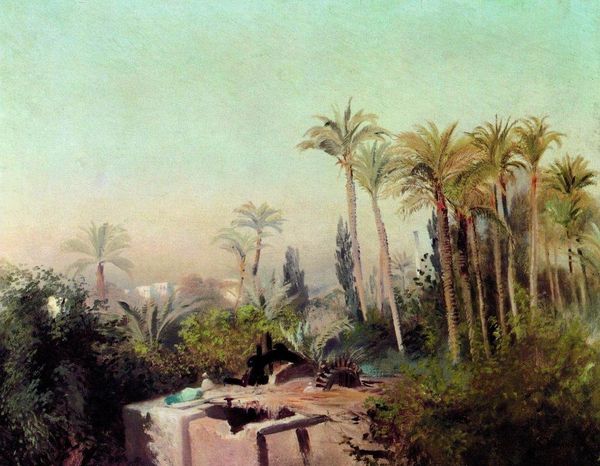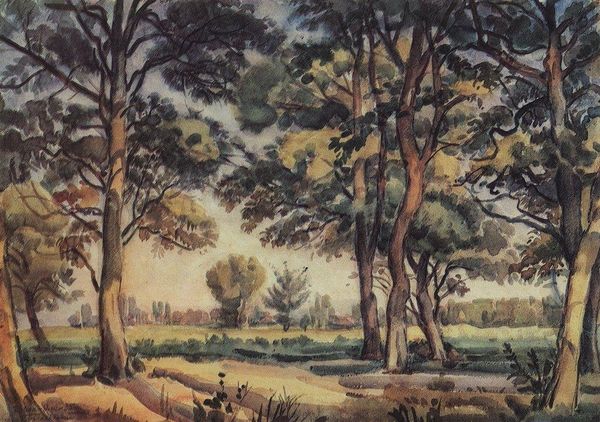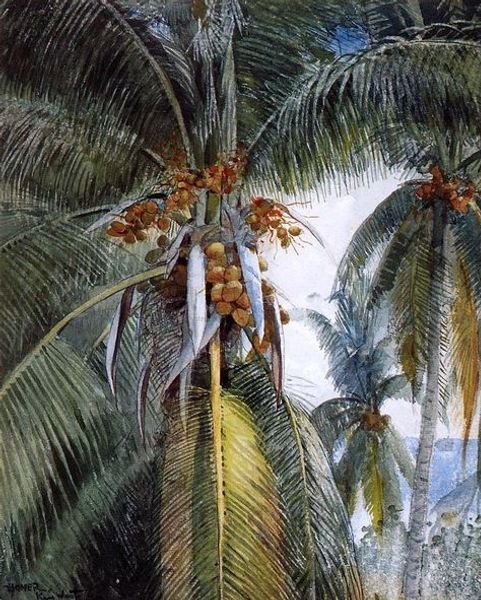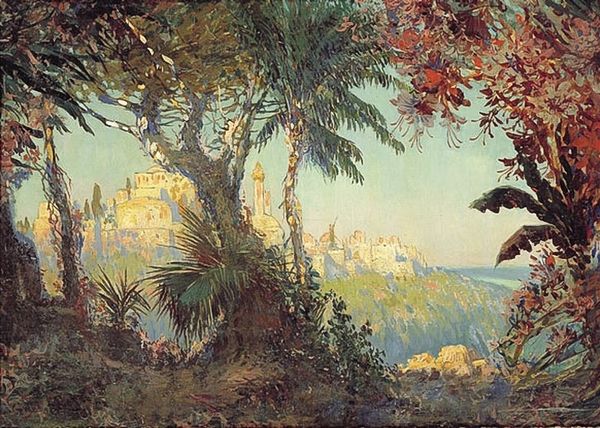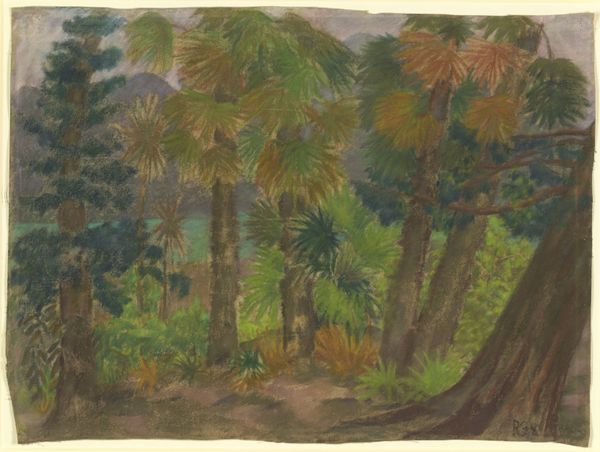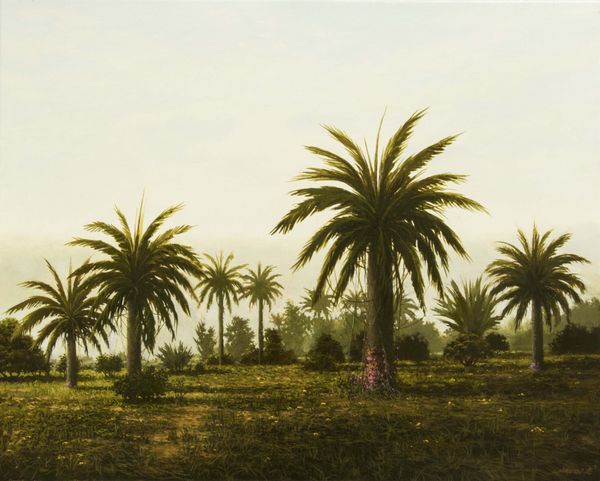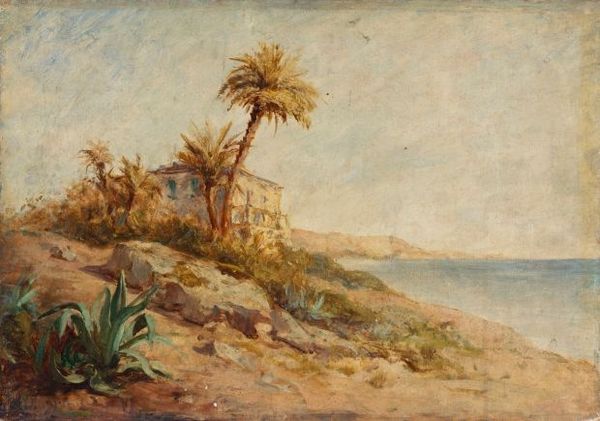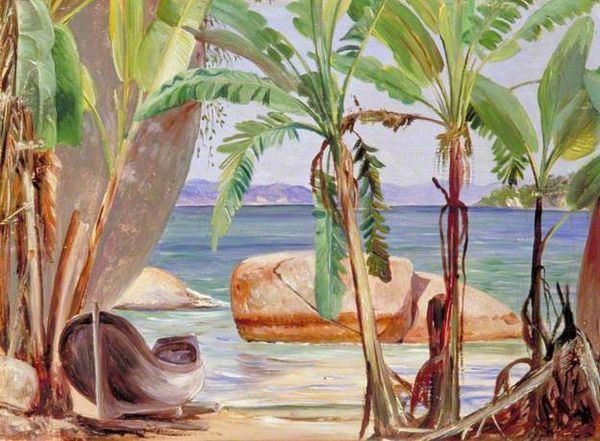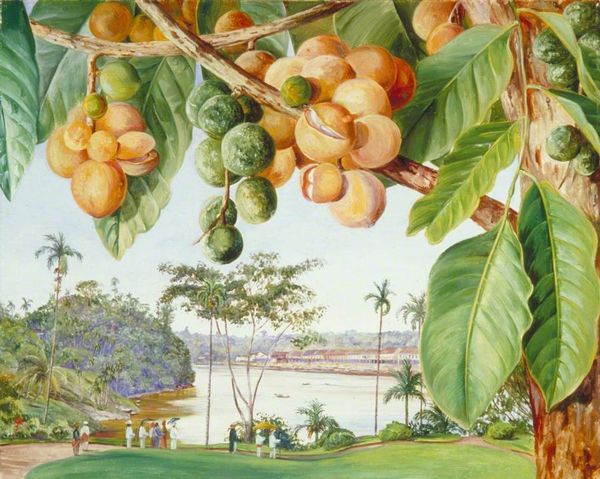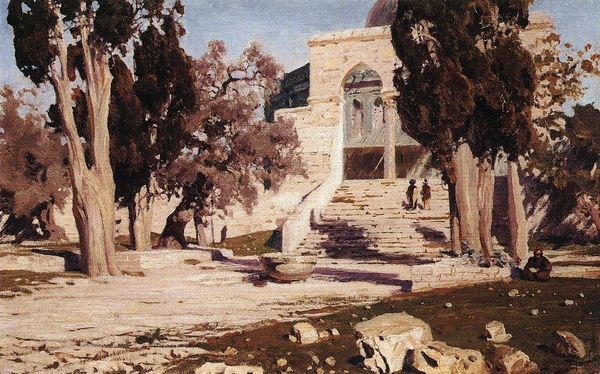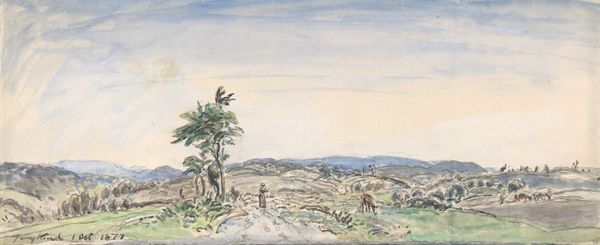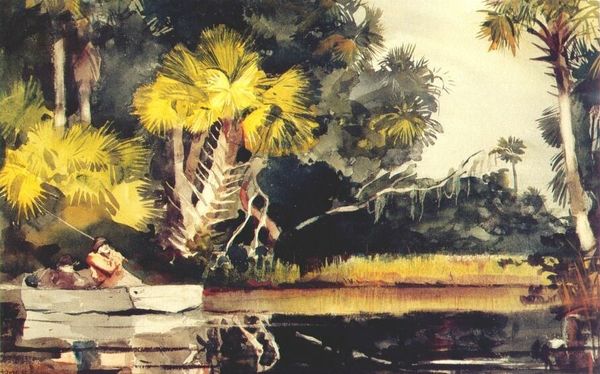
Copyright: Public domain
Editor: Here we have Marianne North's "Specimens of the Coquito Palm of Chile in Camden Park, New South Wales," painted in 1880. The use of oil paint lends such richness to the texture, and it seems dominated by a close study of vertical lines. How do you interpret this work? Curator: Immediately, the interplay of light and shadow captures my attention, dictating the volumetric treatment of the arboreal subjects. Note how the artist contrasts the rough texture of the palm trunks with the feathery foliage above. It's a study in contrasts: the solidity of the vertical trunks versus the airy lightness of the fronds. How do you see this relationship functioning? Editor: I guess the rigid trunks and soft fronds create a satisfying tension... a kind of visual push and pull? Are you saying North uses this juxtaposition purposefully? Curator: Precisely. Consider the application of paint. Observe the brushstrokes, seemingly spontaneous, yet contributing to a unified whole. This directs our eye, wouldn't you agree? Where does the painting seem to lead your eye? Editor: I think I would say the diagonal reach of the dominant palm leads to the palms behind, directing us to the people in the distance. Curator: And consider how that initial focal point functions almost as a repoussoir element, framing the composition and guiding the eye deeper into the landscape, even as that deep focus diminishes. Are we to focus more on the near object or the distant, based on that technique? Editor: Maybe it is saying the act of observation is equally important to observed object itself. It’s certainly a very deliberate arrangement. I learned a lot about seeing nature. Curator: Indeed. It encourages a deeper engagement with form and the structures of representation itself. A fruitful inquiry, I trust.
Comments
No comments
Be the first to comment and join the conversation on the ultimate creative platform.
